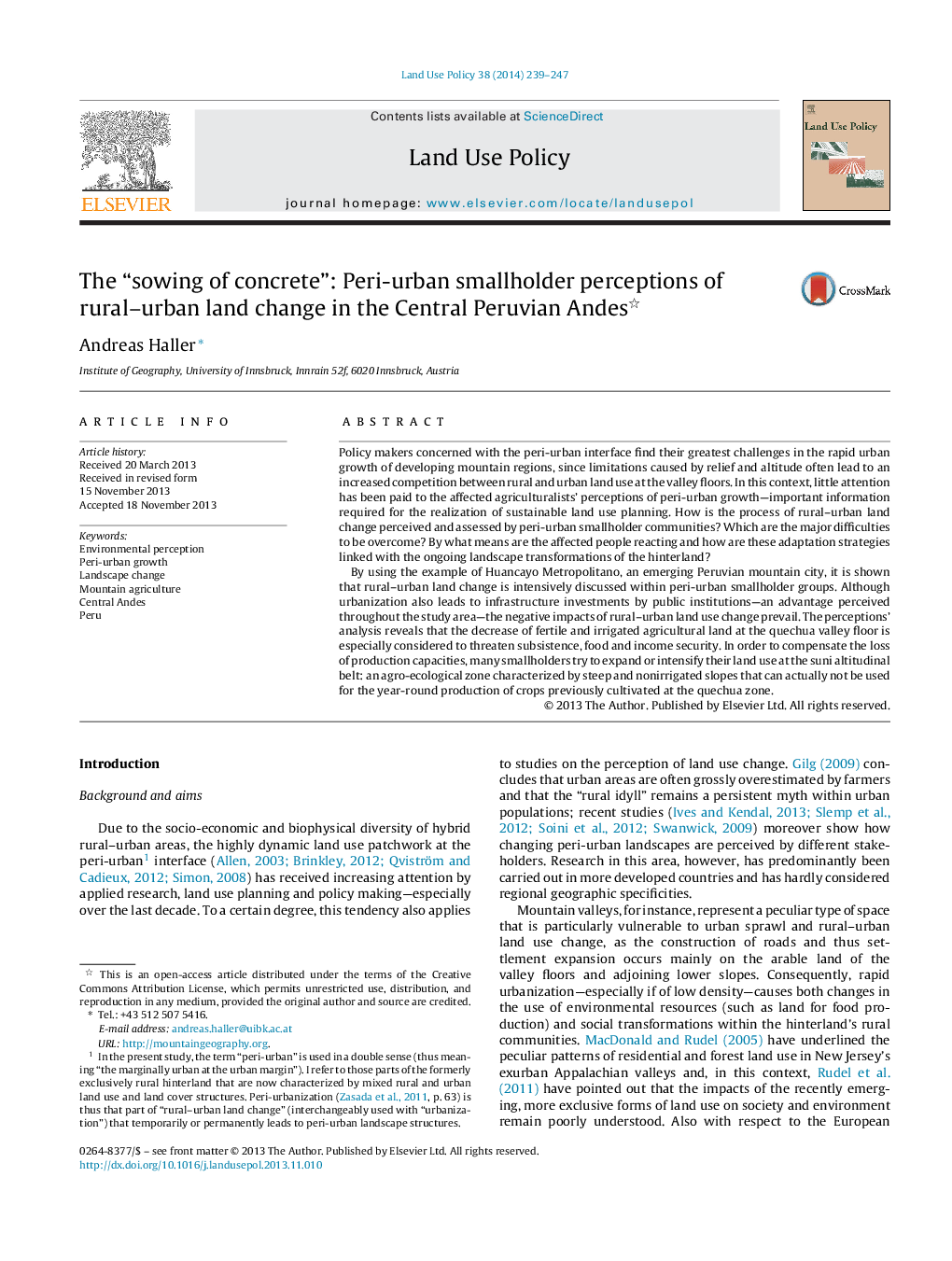| Article ID | Journal | Published Year | Pages | File Type |
|---|---|---|---|---|
| 6548761 | Land Use Policy | 2014 | 9 Pages |
Abstract
By using the example of Huancayo Metropolitano, an emerging Peruvian mountain city, it is shown that rural-urban land change is intensively discussed within peri-urban smallholder groups. Although urbanization also leads to infrastructure investments by public institutions-an advantage perceived throughout the study area-the negative impacts of rural-urban land use change prevail. The perceptions' analysis reveals that the decrease of fertile and irrigated agricultural land at the quechua valley floor is especially considered to threaten subsistence, food and income security. In order to compensate the loss of production capacities, many smallholders try to expand or intensify their land use at the suni altitudinal belt: an agro-ecological zone characterized by steep and nonirrigated slopes that can actually not be used for the year-round production of crops previously cultivated at the quechua zone.
Related Topics
Life Sciences
Agricultural and Biological Sciences
Forestry
Authors
Andreas Haller,
